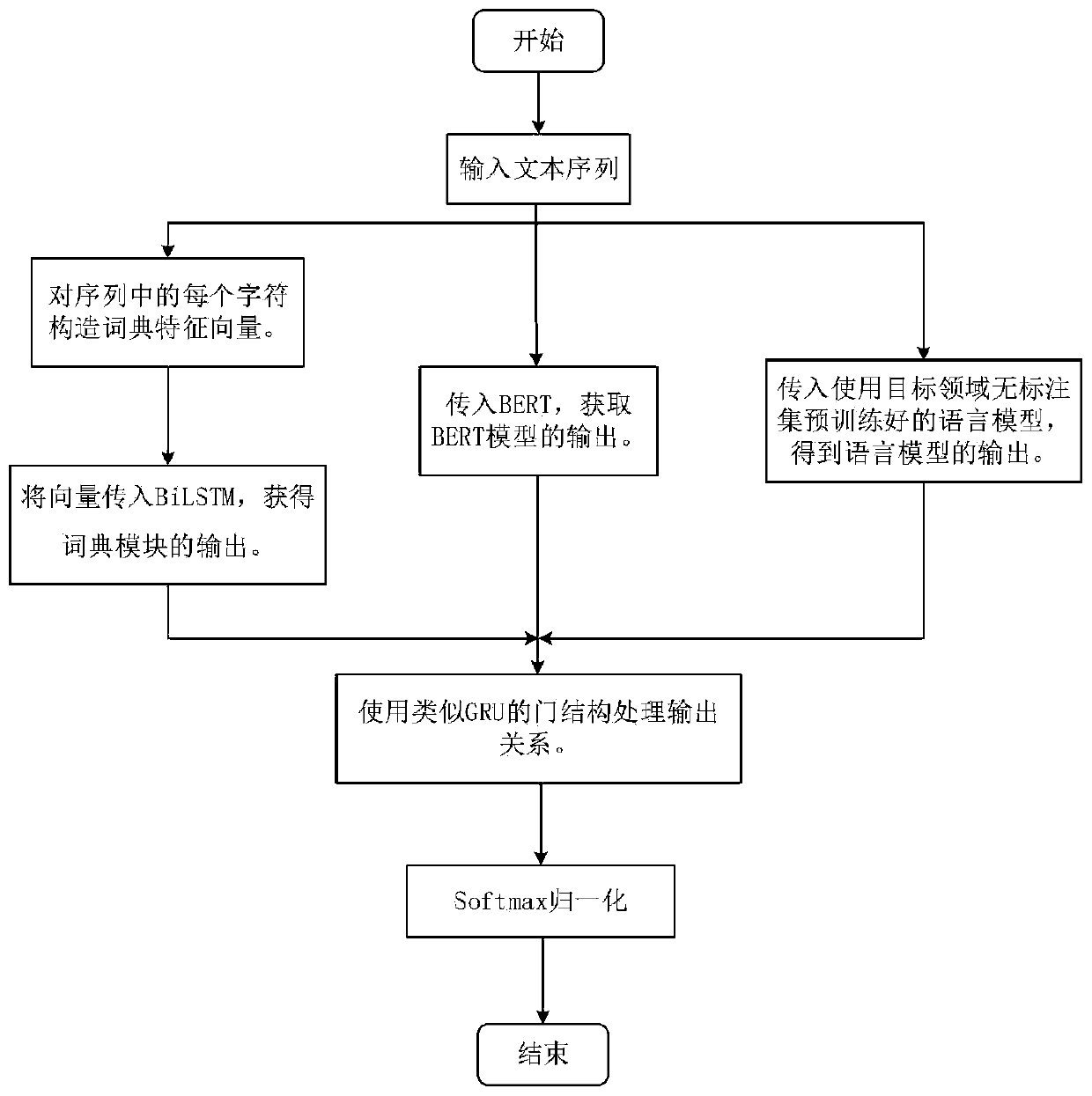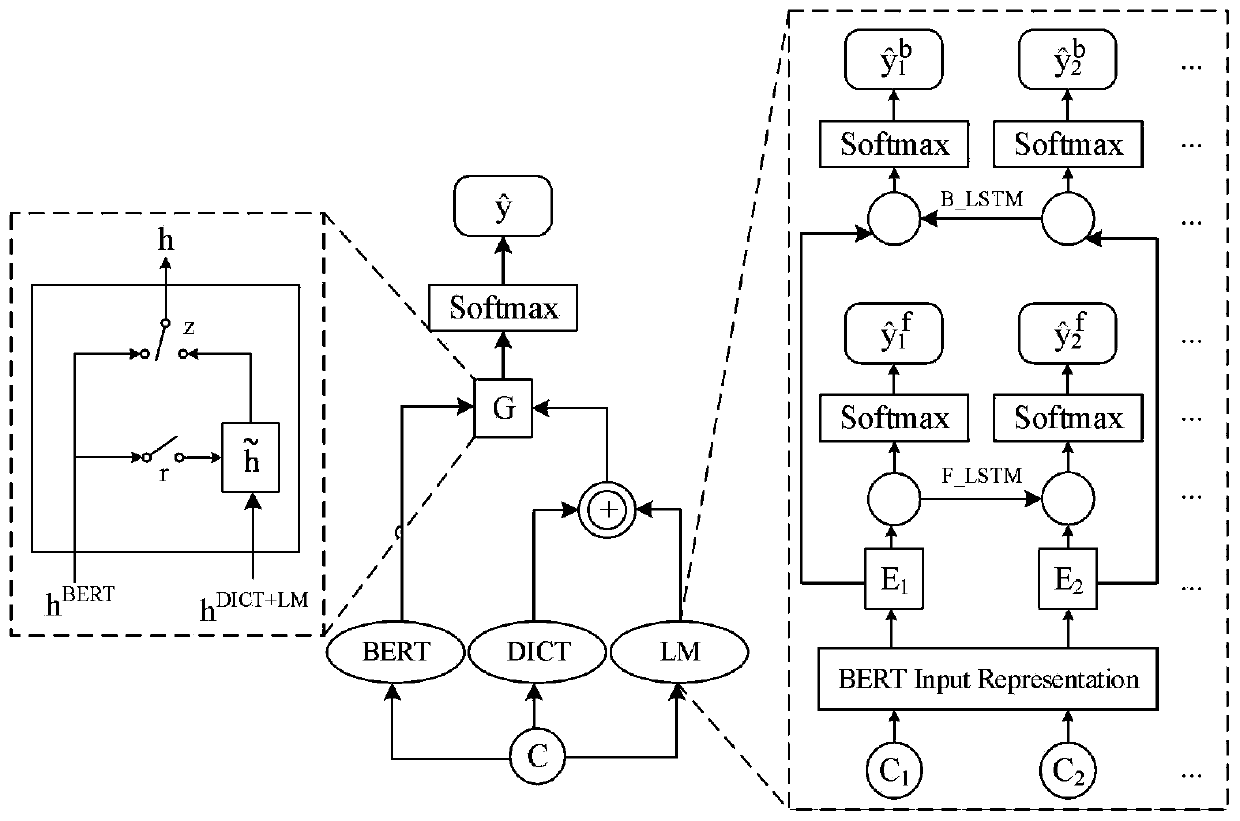A Domain Adaptive Chinese Word Segmentation Method Based on Deep Learning
A Chinese word segmentation and deep learning technology, which is applied in natural language data processing, instruments, biological neural network models, etc., can solve the problems of weak domain adaptability of Chinese word segmentation models, and achieve the effect of strong domain adaptability and low training cost
- Summary
- Abstract
- Description
- Claims
- Application Information
AI Technical Summary
Problems solved by technology
Method used
Image
Examples
Embodiment Construction
[0046] The present invention will be further described below in conjunction with drawings and embodiments.
[0047] Such as Figure 1-4 As shown, a domain-adaptive Chinese word segmentation method based on deep learning, the specific implementation steps are as follows:
[0048] Step 1. Process the text sequence to obtain the output of the BERT model, the output of the dictionary module and the output of the language model. Such as image 3 As shown, the text sequence input image 3 The BERT Chinese pre-training model shown.
[0049] 1-1. Obtain the output of the BERT model:
[0050] Pass the text sequence into the BERT model. For a text sequence, input it into the BERT Chinese pre-training model to get the output of the BERT model.
[0051]
[0052] Among them, E i A word vector representing character i. is the forward hidden layer state representing the character i-1, Represents the backward hidden layer state of character i+1.
[0053] 1-2 Get the output of the ...
PUM
 Login to View More
Login to View More Abstract
Description
Claims
Application Information
 Login to View More
Login to View More - R&D
- Intellectual Property
- Life Sciences
- Materials
- Tech Scout
- Unparalleled Data Quality
- Higher Quality Content
- 60% Fewer Hallucinations
Browse by: Latest US Patents, China's latest patents, Technical Efficacy Thesaurus, Application Domain, Technology Topic, Popular Technical Reports.
© 2025 PatSnap. All rights reserved.Legal|Privacy policy|Modern Slavery Act Transparency Statement|Sitemap|About US| Contact US: help@patsnap.com



